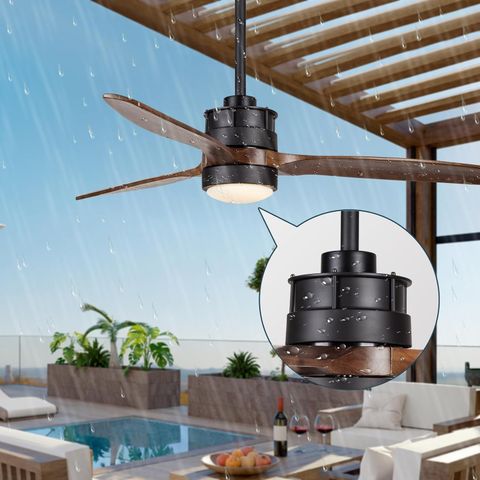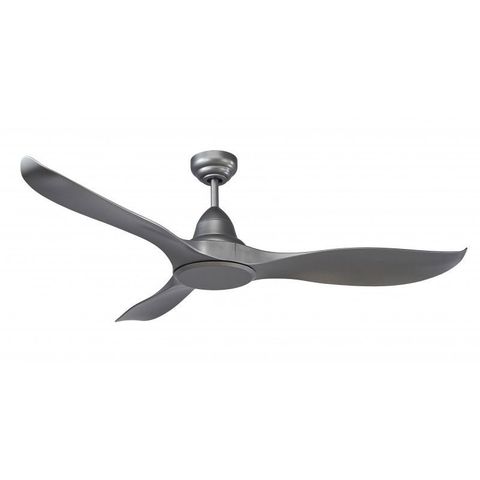Picture this: You’re enjoying your backyard party, the sun is shining, and your outdoor ceiling fan spins smoothly overhead. No rust, no damage, just pure functionality. That’s the magic of corrosion-resistant outdoor fans. But how exactly do they stay in tip-top shape when exposed to rain, salt spray, and intense UV rays? Let’s dig into the science behind those weather-beaten blades.
Outdoor ceiling fans aren’t just about style anymore. They’re serious engineering marvels designed to withstand the elements. Whether you’re hosting summer barbecues or enjoying quiet evenings on your patio, these fans need to keep spinning through everything Mother Nature throws at them. The secret lies in understanding how corrosion works and how manufacturers combat it. It’s not just about pretty blades – it’s about science, materials, and a whole lot of thoughtful design. So let’s take a closer look at what makes some fans last decades while others give up after a few seasons.
What Exactly Is Corrosion?
Corrosion isn’t just a fancy word for rust – it’s actually a chemical reaction that happens when metals interact with their environment. Think of it like a slow food poisoning for metal. When iron or steel meets oxygen and moisture, they form iron oxide, commonly known as rust. This process weakens the material structure and can eventually lead to complete failure. For outdoor fans, this means blades that break off, motors that seize up, and mounting hardware that falls apart.
The process starts at the molecular level. Oxygen atoms pull electrons from metal atoms, creating ions that move around and cause damage. It’s like the metal is slowly being eaten away from the inside out. This is why even high-quality metals need protection when they’re constantly exposed to water and air. Outdoor fans face this challenge every single day, making corrosion resistance absolutely crucial for longevity.
The Materials Game Changers
Not all metals are created equal, especially when it comes to outdoor durability. Aluminum stands out as the gold standard for outdoor applications because it naturally forms a protective oxide layer when exposed to air. This layer prevents further oxidation and acts like a shield. Stainless steel also wins big, particularly grade 304 and 316 varieties, which contain chromium that creates an invisible barrier against corrosion.
Let’s talk about the difference between regular steel and treated alternatives. Regular steel might cost less initially, but it’s like buying a cheap umbrella that breaks in the first rainstorm. Galvanized steel adds a zinc coating that provides extra protection, though it’s not quite as robust as stainless steel. Some manufacturers also use specialized coatings like powder coating or anodizing processes that add another layer of defense against the elements. These aren’t just marketing buzzwords – they’re proven methods that extend fan life significantly.
Coating Technologies That Work
Beyond the base materials, coatings play a vital role in keeping fans corrosion-free. Powder coating has become incredibly popular because it creates a tough, uniform finish that’s much more durable than traditional paint. The process involves applying charged powder particles that melt and cure together, forming a seamless protective layer. This method offers superior resistance to chipping, fading, and weathering compared to liquid paints.
Another approach is the use of specialized sealants and protective films. These can be applied to critical joints and connections where water might seep in. Some companies use marine-grade coatings that are specifically designed to handle saltwater exposure. These aren’t just fancy names – they’re engineered to resist the harsh conditions found along coastlines. The key is finding the right combination of materials that work together to provide maximum protection.
Design Considerations for Longevity
It’s not just about what materials you choose – how you put them together matters too. Design features like proper drainage systems prevent water from pooling on surfaces where it could start the corrosion process. Overhangs and protective covers on electrical components help keep moisture away from sensitive areas. The mounting hardware also needs to match the fan’s overall corrosion resistance.
Consider how water flows over a fan. If there are no good drainage paths, water sits and waits to react with metal surfaces. Smart designers incorporate small channels and vents that direct water away from vulnerable spots. This attention to detail can mean the difference between a fan that lasts ten years versus one that fails within two. The best outdoor fans are like well-designed shelters – they protect themselves from the elements while still allowing proper airflow.
Real-World Testing and Standards
Manufacturers don’t just guess at how their fans will perform. Real-world testing under extreme conditions helps determine which products truly stand the test of time. Salt spray tests simulate coastal environments where salt water accelerates corrosion. Humidity chambers expose fans to constant moisture levels that might occur during extended rainy seasons. Temperature cycling tests subject fans to rapid heating and cooling that can cause expansion and contraction stresses.
Industry standards like those from the American Society for Testing and Materials (ASTM) provide benchmarks for measuring performance. These tests help consumers understand what to expect from different brands and models. It’s also worth noting that some manufacturers go beyond basic requirements, conducting additional field tests in actual outdoor settings. These real-life evaluations often reveal issues that laboratory tests might miss, providing valuable insights for future improvements.
Maintenance Tips for Maximum Lifespan
Even the most corrosion-resistant fans benefit from some care and attention. Regular cleaning removes dirt and debris that can trap moisture against surfaces. A gentle wash with mild soap and water helps prevent buildup that might accelerate deterioration. Checking for loose parts and tightening connections regularly ensures that water can’t find easy entry points.
Some fans have removable blades that can be cleaned individually, making maintenance easier. Others feature sealed motor housings that prevent moisture intrusion. Knowing your fan’s specific maintenance needs helps you get the most from your investment. It’s also smart to inspect fans annually, looking for early signs of wear or damage before problems escalate. Small maintenance steps today can save you from expensive replacements tomorrow.
Corrosion-resistant outdoor ceiling fans represent the perfect marriage of science and practicality. They’re not just about keeping things looking nice – they’re about creating reliable, long-lasting solutions for outdoor living spaces. From the careful selection of base materials to the sophisticated application of protective coatings, every aspect of these fans is designed with the elements in mind. Understanding this science helps us appreciate why some fans can handle decades of outdoor exposure while others give up after just a few seasons. When choosing your next outdoor fan, remember that true durability comes from a combination of quality materials, smart design, and proper maintenance. It’s not just about getting a fan that works now – it’s about investing in something that will continue to provide comfort and beauty for years to come.














